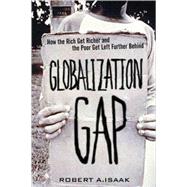Globalization Has Triumphed, But Can We Save the Poor?
“An impassioned report on the dangerous side of globalization, the book is a much-needed counter to the widespread propensity of economists to spring automatically to its defense. Recognizing that globalization cannot be wished away, the author turns to the proper question: how can we ensure that its potential contribution to welfare is not lost?”
–William Baumol, Emeritus Professor, Princeton University, and co-author of Downsizing in America: Reality, Causes and Consequences
“Robert Isaak is unique among critics of Globalization in that he accepts it as inevitable but goes determinedly to propose innovations that can make it work better economically and socially for the rich and the poor.”
“Robert Isaak's new book presents fresh ideas on globalization that will enrich a polarized debate between the pessimists and the hyper-optimists. His work brings back Ortega y Gasset classic ideas of the late 1930’s when the "masses" brought down globalization and with it the worst recession and the bloodiest war. I am sure that Isaak's book will guide the readers to look forward after learning from past ideas and experiences.”
–Jorge Pinto, former Ambassador of Mexico and member of the Board of the World Bank. Director of the Center for Global Finance
For most people except the world’s very richest, globalization is failing–catastrophically. If we don’t act, its failure will lead to a global upheaval worse than any in human history. But there’s another, better path. Isaak shows how a new globalization can give the poor a powerful stake, both here and abroad. Isaak's ideas can lead toward a more stable, peaceful world, in which we can all build our futures–rich and poor alike.








